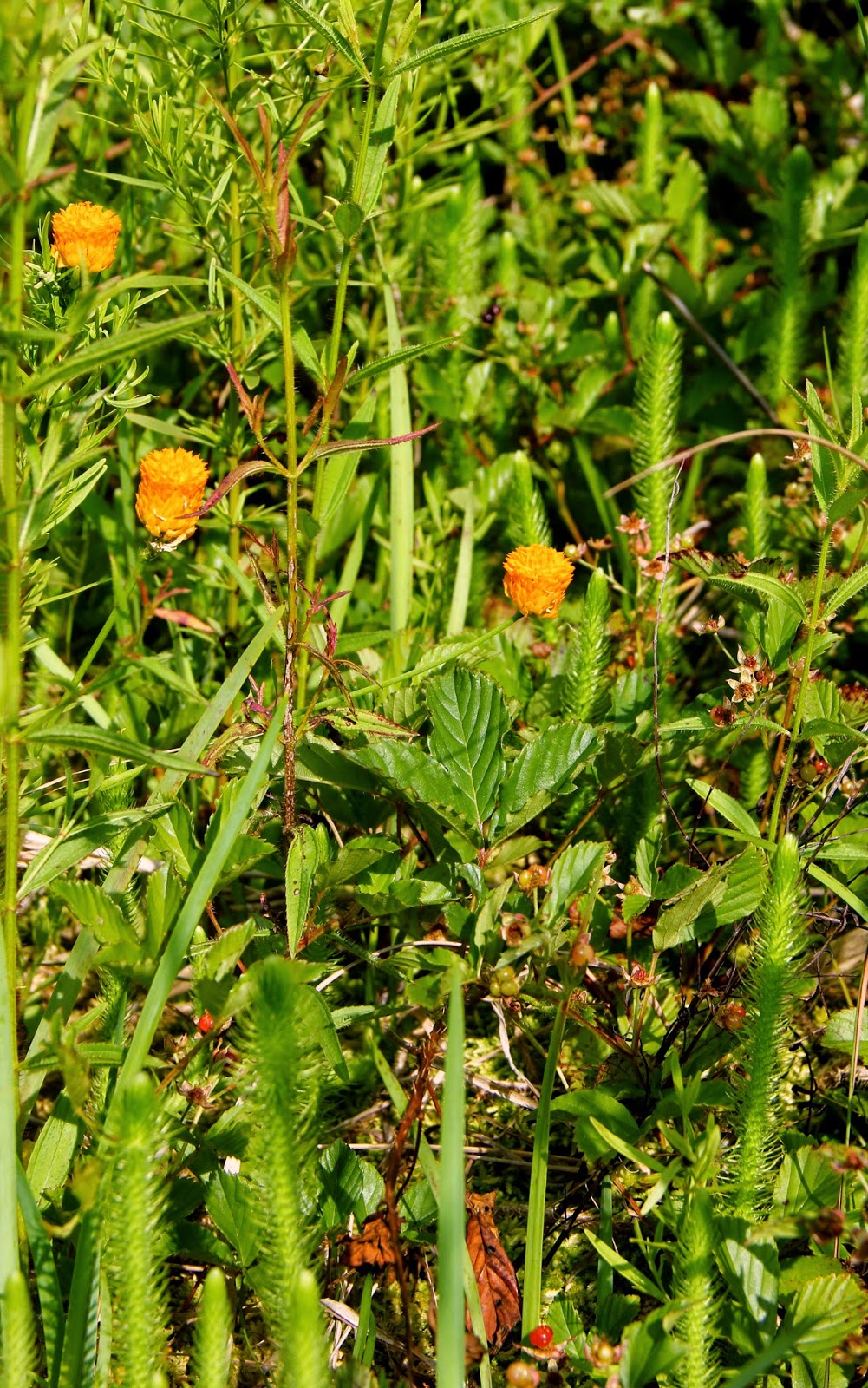On the homeward leg of a day trip to Cape Carteret, we decided to swing south of our normal route to see what we might see...
Once we cleared the suburbs of Jacksonville on Highway 53, the roadsides were rich with summer wildflowers, so along about Angola Bay, Cousin Layne and I stopped for a quick photo shoot. Here are a few of the more photogenic plants we saw...
There were dozens of these low pine barren milkworts or yellow savannah milkworts, Polygala ramosa , in the immediate vicinity of the ditch.
Just beyond the ditch, in the full sun, was a sandy bank a few meters wide which eventually gave way to the shade of the pine woods along a small black water creek. Dominating the ditchbank were several relatively dense patches of Carolina redroot, Lachnanthes caroliana, in full bloom.
The genus name of Carolina redroot roughly translates "soft woolly hair" and refers to the fuzzy flower buds.
Amidst the flowering plants, we spotted a number of ferns and club mosses, including this really cool one which may be southern bog clubmoss, Lycopodiella appressa.
The plants were so dense in our little roadside botanical garden, we were almost afraid to move for fear of trampling them. The blossoms on these tall pink meadow beauties were very similar to the Maryland meadow beauties back home in the Sandhills, but the plants were much taller and more slender, perhaps the savannah meadowbeauty, Rhexia alifanus?
In either case, the plant lives up to its common name, as even the blossoms which are past their prime make a bold statement here along the roadside with their magenta hues and showy seedpods.
Also standing tall among the more diminutive plants in our coastal plains roadside garden was the tall yellow-eyed grass, Xyris sp.
Layne spotted this meadowbeauty with slightly fresher blossoms a bit further along the way, so of course we had to make our way over for a closer look, and almost before we knew it, our waiting car was out of sight.
Another impressive yellow-eye...
And a broader view, looking ahead down the highway right-of-way at an extensive gathering of Carolina redroot mingling with a couple varieties of fern along the forest margin.
A closer look at the redroot blossoms and a busy pollinator,
and yet another example of yellow-eyed grass, presumably all the same species, but we're not quite sure which it is...
Almost as abundant as the redroot was the orange milkwort, Polygala lutea, close cousin to the yellow milkwort with whose photo we opened today's post.
Glowing bright orange in the late afternoon sun, these showy blossoms look to steal the spotlight...
while these clubmoss, most likely foxtail clubmoss, Lycopodiella alopecuroides, look to take it right back.
Some of the clubmoss stood erect, while others seemed to be growing laterally, not quite as bushy as most of the mammalian foxtails I've seen, but certainly similar enough to understand the origin of the common name.
And there in the midst of the foxtails, dainty and demure, Nuttall's lobelia sways gently on the most slender of slender stalks.
Another stand of Carolina redroot, with a good view of their flat iris-like leaves at the base of a tall stem which supports the cluster of furry white and yellow blossoms.
More orange milkwort, perfectly situated to catch the sun; we couldn't resist another photo.
And just when we thought we'd seen all there was to see, we bumped into these little white gems.
Lanceleaf rose gentian, Sabatia difformis, whiter than white in the bright sunlight, a crowd of ebullient faces, bringing smiles to ours as well.
By now it's long past time to rejoin Julie and Hunter in the car, but we pause for just one more shot.
Then Layne spied the tiny blackberries twining amongst the clubmoss and milkwort and grasses of every imaginable kind...
A few tasty blackberries later, we carefully weave our way back to the waiting car,
but not before spotting one more new (to us) face in the company of a young pine; yellow meadowbeauty, Rhexia lutea.
Layne and I left our roadside wonderland amazed at the incredible bio-diversity of North Carolina's coastal plain; thrilled and humbled that our brief hike along the roadside had introduced us to such an impressive array of flora. We'll let you know when we head back down that way again, along about Angola...

















































